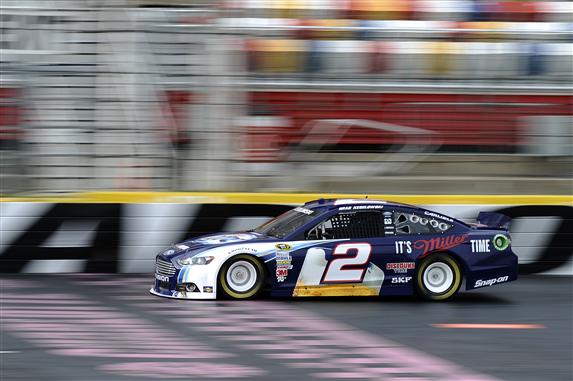
After much anticipation, the new 2013 cars hit the track Tuesday at Charlotte Motor Speedway for a test session in which all three manufactures took part in.
With all three manufactures having their cars unveiled and drivers finding themselves with the teams they will spend the 2013 season with, it was a day of new things Tuesday at Charlotte.
While there have been test sessions for the new car before at tracks such as Talladega (Ala.) Superspeedway and Martinsville (Va.) Speedway, this was the first real chance teams had with their new surroundings and with everything in place for the 2013 season at one of the “bread and butter” 1.5-mile tracks which make up more than half of the Sprint Cup schedule.
“The car has really awesome potential,” Earnhardt said during testing Tuesday at Charlotte Motor Speedway.
“The cars that you see in the garage; you’ll stand there and see Fords and Toyota’s and Chevrolet’s driving by. It’s great because everything looks different, everything is instantly recognizable.”
Creating manufacture identity was one of the main goals NASCAR had when the plan came in place, and it appears as though they were successful in doing that.
With a distinction in manufactures can sometimes lead to one car having a distinct advantage over the rest. In the past, NASCAR was quick to regulate on the side of parity with changes to the spoiler and other body parts on the car being common back before days of the “Car of Tomorrow”.
While the Richard Childress Racing Chevrolet’s topped the charts in Tuesdays’ test session with Jeff Burton leading the way, 2012 Sprint Cup champion Brad Keselowski believed that the Toyota’s had the advantage at the moment but also said that there is still a long ways to go in development with the car before the season starts.
Besides creating a distinction between each of the three manufactures, NASCAR also wanted to improve the overall racing product which has been often criticized since the COT came into action back in 2007.
At the test session earlier in the year at Talladega Superspeedway, NASCAR had the teams run in a simulated pack-racing session to get an idea how the car would race in the draft as a baseline for the rule package for the season-opening Daytona 500.
Tuesday at Charlotte, NASCAR setup two, 15-lap “heat races” in order to get feedback from the drivers on how the car would race in race-like conditions at a 1.5-mile track.
“All in all the feedback in the garage area has been very positive,” said Robin Pemberton, NASCAR vice president of competition.
“It looks to me that all the hard work from the teams, manufacturers and our engineers at the R&D Center is going to pay off. Like I said last month when we hand this car off to the teams, it will be in the best shape that we have ever handed a car off to the teams to start a new season.”
While much of the success of how a car races is based off the aerodynamic package, the element of tires also plays a major role as to what the racing product will look like on the track.
During the era of the COT, Goodyear admitted to the struggles of making an adequate tire for the car which presented the lone tire supplier in NASCAR a unique challenge. Since the 2013 cars were unveiled earlier in the year, Goodyear has been working on a package to create better racing, but that package was not on display Tuesday at Charlotte.
While many things still have to be worked out with the new cars, the overall reaction to the cars among drivers and fans is positive.
“I think the car has really awesome potential and I like it already leaps and bounds beyond the COT,” said Earnhardt Jr.
“They feel like they have a ton more downforce. That could change in different weather conditions, but it’s a promising start. Today is feeling good and driving good and I think that there is good potential.”




